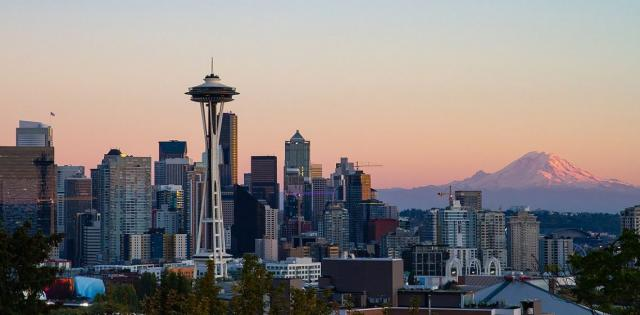17.2 Washington Association of Building Officials (WABO) Welding Code
David Colameco, M.Ed.
Development of the WABO Welding Code
WABO describes its purpose and history as “incorporated in 1977 to promote building codes and standards that safeguard the public health and safety; advise on legislative matters; assist in the development of national and state codes; provide educational opportunities for its members; and preserve local government control of code administration” (Washington Association of Building Officials (n.d.).
Welders and welding operators mainly need to be aware of WABO’s welder certification program and not its other building codes. This welder certification program developed WABO Standard 27-13, which outlines the requirements for testing welders and welding operators for certification under WABO for structural welding. The WABO welder certification is similar to a welder certification under AWS D1.1, as WABO references the AWS standards heavily.
Basics of WABO Standard 27-13
Similar to other welding codes, WABO 27-13 describes its purpose and scope. It describes requirements that agencies, such as your welding school, must meet to apply to be a test facility to certify welders and welding operators through welder qualification tests. It describes the test that WABO requires and the limitations of those tests. To ensure that welders and welding operators produce quality weldments during their qualification test, WABO also defines the requirements for inspection of test weldments, both visually and destructively. The code also includes ways to send in questions, the process for challenges and appeals, suspensions and withdrawals, and terms and definitions.
Uses of WABO Standard 27-13 in Industry Today
A company can build structures to the WABO requirements if it is welding to an approved WABO code and employing WABO-certified welders. In Washington state, inspectors from the state and/or local government inspect structural buildings, such as those seen in Figure 17.1, to WABO-adopted standards. If you are a welder or welding operator in Washington or the nearby states of Idaho, Oregon, and even some parts of Montana, you will find that many companies that use welders in structural applications will be looking for WABO certifications. It is possible that other companies in other states have heard of WABO and may accept it as a qualification, too.
Because WABO certifications are required for company welders to weld structural steel in Washington state, WABO is an important set of certifications to earn. As a WABO-certified welder, you will be able to show that you can successfully weld to WABO-approved standards.

Getting certified to WABO Standard 27-13
Many community colleges and other organizations in Washington state offer WABO certification tests. Check to see if your college or organization offers WABO certification tests or find a place that is convenient for you. Then you would choose a certification test to take based on the welding process you are currently learning or one you will practice for because you know a future employer requires it. It is highly recommended that you discuss your certification plans with your welding lab instructors well in advance so you can improve your welding for the test. Your instructors will likely provide more direct feedback and concentrate on your welding defects if they know you are preparing to take a certification test versus providing you encouragement when you are learning.
WABO offers certification in what it defines as shop and field certification for different joint types, base material shapes, and base materials. The shop certification test for groove welding plates is done in the vertical position, while others require welding plates in both the vertical and overhead welding positions . Check to see which tests are offered at each testing location, as they may only test a subset of the following manual and semiautomatic welding processes:
- Groove weld test plate for unlimited thickness
- Groove weld test plate for limited thickness
- Groove weld test for butt joints on pipe or square or rectangular tubing of unlimited thickness
- Groove weld test for T-, K- or Y-connections on pipe or tubing of unlimited thickness
- SMAW, GMAW, FCAW, GTAW, and SAW are specified in tables in WABO 27-13 along with their electrodes, welding position, material thickness, range qualified, and positions qualified
Plates of unlimited thickness mean that you would be certified to weld two-inch, three-inch, four-inch plates and higher; there is no limit to the thickness of the base material. As a structural code, other shapes of metal may be used, such as pipe or tubing that is square or rectangular. When using pipe or tubing, not all welds are used to weld them end to end for a longer pipe or tube. Sometimes a joint where more than one pipe or tube segment comes together is required; these are called T-, K-, and Y-connections based on the shape of the joint that the segments make. The certification you need will depend on the joint, materials, and material thickness your employer welds.
Before taking a certification test, ensure you can create the required weldments in the time allotted for the test and that your tools are in good working order, and replace any worn out tools and consumables you want to bring to the test.
Attributions
- Figure 17.1: Seattle Washington by U.S. Department of the Interior Bureau of Land Management in the Public Domain; United States government work

